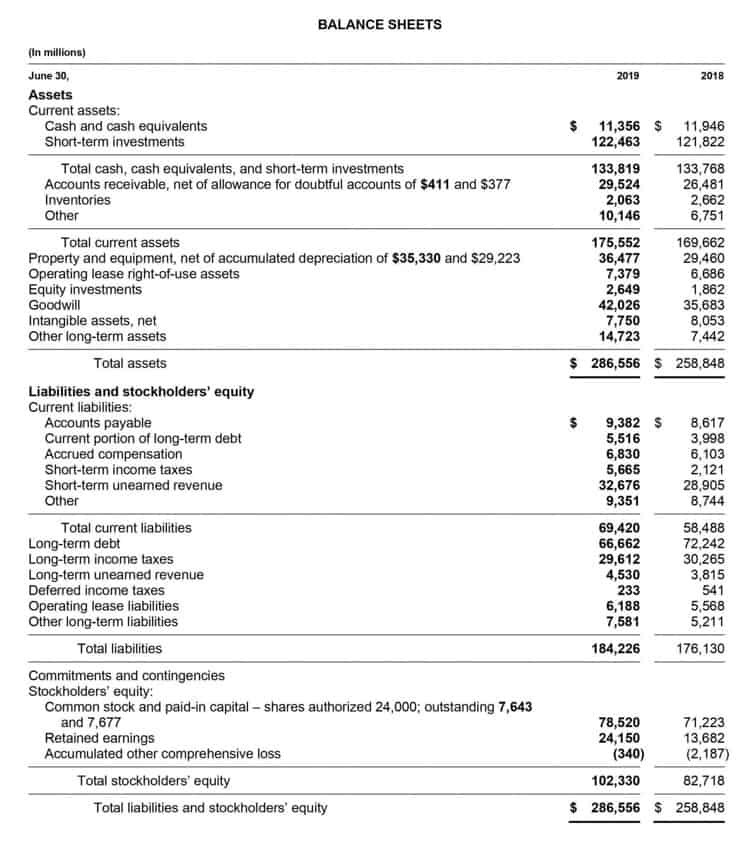
While capital stock can be https://www.bookstime.com/bookkeeping-services/indianapolis advantageous for SMEs with growth mindsets, they also have their caveats. The more shares a company issues, the more equity they relinquish to outsiders. Issuing a large number of shares also dilutes the value of each outstanding share. Compare the dividends you’ll receive relative to the share price to determine if the yield offers an attractive return.
- Capital Stock serves as the financial bedrock for corporations, bolstering their ability to pursue growth and operational goals.
- Unlike outstanding shares issued to shareholders, treasury shares or treasury stock do not grant voting rights or right to dividends.
- Many companies sell common stock to gather money they can invest back into their business.
- Lawyers on UpCounsel attended law schools such as Harvard Law and Yale Law, with an average 14 years of legal experience.
- It represents not just a source of funding but also a way for investors to partake in corporate success through equity ownership—yielding potential dividends and appreciation in value over time.
What are the benefits of each?
When a person buys shares in a company, they own a percentage of the company’s ownership. For example, a sole proprietorship does not have the authorization to issue shares whereas a registered corporation can. In addition to the classes of shares listed above, there are additional categories to describe shares according to their place in the market. We are seeing entrepreneurs issuing their own blockchain-based tokens to raise money for their networks, sidestepping the traditional, exclusive world of venture capital altogether. The importance of this cannot be overstated – in this new world, there are no companies, just protocols. A stock register is a list of all shareholder’s contact information, how many shares they own, and the identifying number of each share that is owned.
Advantages and Disadvantages of Capital Stock

Authorized shares are those that a company is legally able to issue—the capital stock, while outstanding shares are those that have actually been issued and remain outstanding to shareholders. For common stock, when a company goes bankrupt, the common stockholders do not receive their share of the assets until after creditors, bondholders, and preferred shareholders. Shareholders in a company have the right to vote on important decisions regarding the company’s management. Usually, common stock allows the shareholder to vote, but preferred stock often does not confer voting rights. Issued stock is the number of shares that a corporation has actually issued or sold to investors, either through an initial public offering (IPO) or a secondary offering.
Why do companies have capital stock?

Raising capital by selling shares (equity investment) is interesting for corporations as they are able to the basic form of capital stock is access the capital needed by the business without having debt (debt financing). A company is not authorized to issue more shares than what it is authorized to issue in its capital stock. Unlike taking loans or issuing bonds, a company is not required to repay capital investors at a set schedule. In addition, it is inexpensive for a company to issue new shares, which can be sold at a much higher price than the cost of issuing the securities. Both common stock and preferred stock have pros and cons for investors to consider. The first-ever common stock was issued in 1602 by the Dutch East India Company and traded on the Amsterdam Stock Exchange.
- Growth stocks belong to companies expected to experience increasing earnings, which raises their share value.
- Capital stock is the amount of common and preferred shares that a company is authorized to issue, according to its corporate charter.
- The chance for dividends and growth in share value makes investing in common stocks attractive.
- It is calculated by multiplying the par value of those shares by the number of shares outstanding.
- In this section, we will explore the types and features of capital stock, and why it is important for both investors and managers to understand them.
- Therefore, it is important for companies to monitor their capital and make sure it is sufficient to meet their needs.
- It is important to note that par value is a set dollar amount assigned to each common share.
Disadvantages of capital stock
- Because they have less risk than common shareholders, preferred shares typically have a lower return.
- These are often sold to investors, who may benefit from dividend payments and strong appreciation as the business grows.
- Both common stock and preferred stock have pros and cons for investors to consider.
- These stocks are also normally less liquid than common stocks, meaning they are traded less frequently, making them less suitable for retail investors looking for short-term gains.
- Convertible allows investors to change their preferred shares into common ones under certain conditions.
- The capital stock is the total share capital (including equity capital and preference capital) that a company has issued.
First, it is important to understand the difference between the two types of stock. Capital stock represents ownership in a company and gives the holder voting rights and https://www.instagram.com/bookstime_inc the potential to earn dividends. Common stock also represents ownership in a company, but does not typically come with voting rights or guaranteed dividends. However, the firm capital stock represents the ownership of shareholders in the capital of the company.
What are some examples of common stock?
Common stockholders are also entitled to a share of the company’s profits, either in the form of cash dividends or stock dividends. However, common stockholders also bear the highest risk among the capital stockholders, as they are the last to be paid in the event of liquidation or bankruptcy. In other words, common stockholders have a residual claim on the company’s assets, after all the debts and obligations have been settled. Common stock, as its name implies, is one of the most ordinary types of stock. It gives shareholders a stake in the underlying business, as well as voting rights to elect a board of directors and a claim to a portion of the company’s assets and future revenues.
- On the other hand, a company with a small capital stock may struggle to compete in the market.
- Voting rights allow shareholders to participate in the decision-making process of the company, such as electing directors, approving mergers, and changing the corporate charter.
- Selling preferred stock, like any other shares, lets a company raise money by selling a stake in the business.
- It represents the pool of different shares of stock a company can issue and for how many in total.
- They share in the company’s success and can make money if the stock value goes up.
Capital stock vs common stock

The capital stock is what a corporation is authorized to issue in shares while a common stock is a type of share. When a company receives money in exchange for the shares in its capital stock, we refer to that as a capital contribution and that is reported as the “paid-in capital” on the balance sheet. An incorporated legal entity is legally authorized to issue shares of stock to different shareholders.